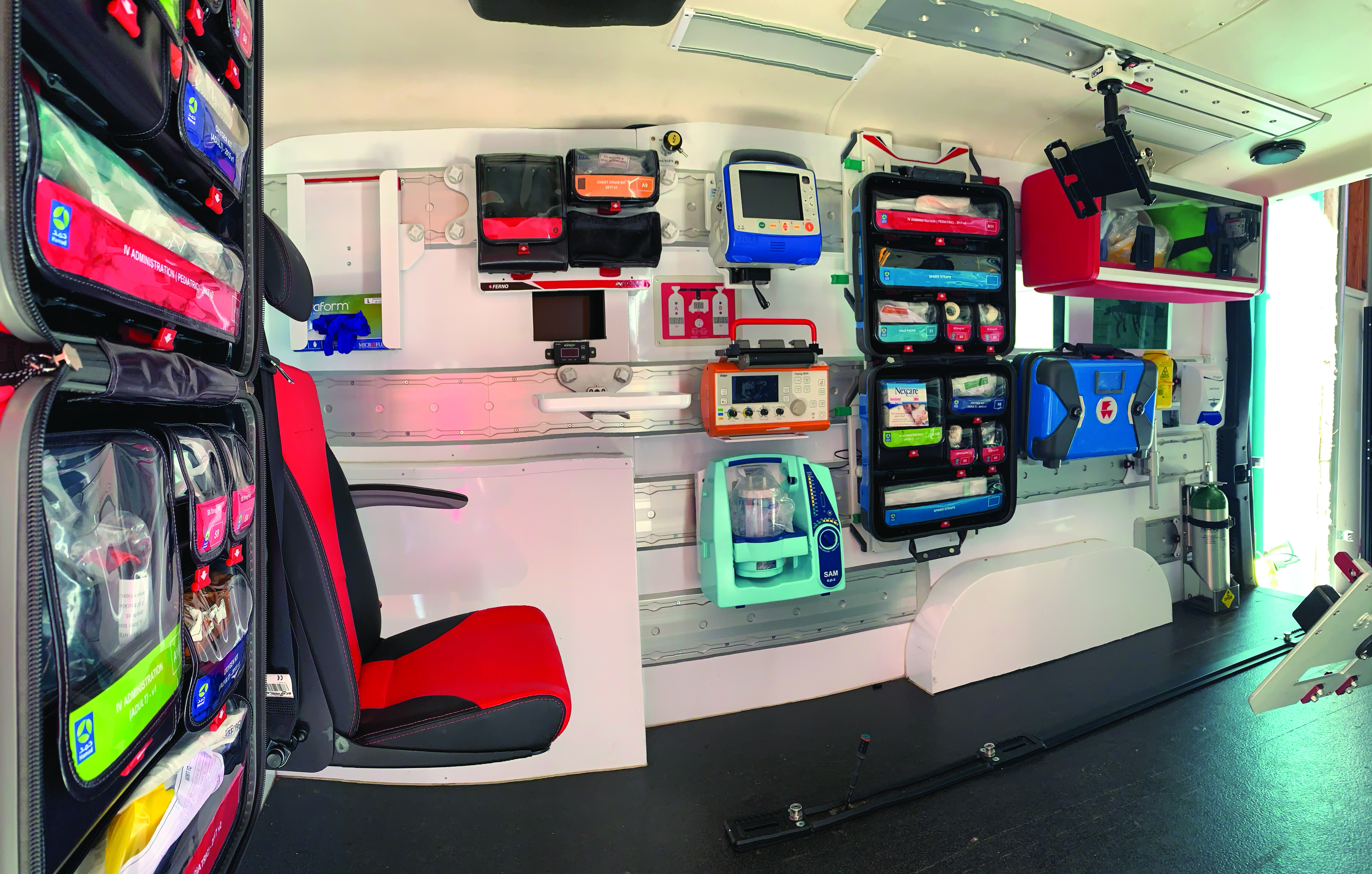40 jaar Vandeputte Medical

Typography
<h1> through <h5>
tags
Heading 1
(<h1>Heading 1</h1>)Heading 2
(<h2>Heading 2</h2>)Heading 3
(<h3>Heading 3</h3>)Heading 4
(<4>Heading 1</h4>)Heading 5
(<h5>Heading 5</h5>)Heading 1
(<h1 class="bold">Heading 1</h1>)Heading 2
(<h1 class="yellow">Heading 1</h1>)And combinations are of course also possible:
Heading 3
(<h1 class="yellow bold underline">Heading 1</h1>)Different classes
Different typography classes that can be applied:| Class | Example |
|---|---|
.bold |
I'm bold |
.semibold |
I'm semibold |
.light |
I'm light |
.blue |
I'm blue |
.yellow |
I'm yellow |
.green |
I'm green |
.strikethrough |
I'm strikethrough |
.italic |
I'm italic |
.underline |
I'm underline |
table element a class of .table and .striped)
<table class="table striped margin-top">
<tr>
<td>Item 1</td>
<li>Item 2</li>
</tr>
</table>
Lists
Using the class.checklist on the <ul> tag the list items will have checkmarks
in front of them.- Item 1
- Item 2
- Item 3
<ul class="checklist">
<li>Item 1</li>
<li>Item 2</li>
<li>Item 3</li>
</ul>
Font sizes
There are different classes for font sizes too. These can be applied to all sorts of elements. Below a table with examples
| Class | Example |
|---|---|
.size-xxs |
Lorem ipsum dolor (10px) |
.size-xs |
Lorem ipsum dolor (12px) |
.size-s |
Lorem ipsum dolor (14px) |
.size-m |
Lorem ipsum dolor (16px) |
.size-xm |
Lorem ipsum dolor (18px) |
.size-xxm |
Lorem ipsum dolor (22px) |
.size-l |
Lorem ipsum dolor (28px) |
.size-xl |
Lorem ipsum dolor (32px) |
.size-xxl |
Lorem ipsum dolor (40px) |
Buttons
anchor tags and
different button classes. The href property
on the anchor tag can be used to link to a specific page. For example, the orange button
links to http://www.google.com. When you set
a "#" as the href value, it does not go anywhere.
| Buttons | Code |
|---|---|
| I'm a button | <a class="button yellow" href="http://www.google.com">I'm a
button</a> (the target="_blank"
causes the link to open in a new window!) |
| I'm a button | <a class="button blue" href="#">I'm a button</a> |
| I'm a button | <a class="button green" href="#">I'm a button</a> |
| I'm a button | <a class="button transparent transparent-green" href="#">I'm a
button</a> |
| I'm a button | <a class="button transparent transparent-blue" href="#">I'm a
button</a> |
| I'm a button | <a class="button transparent transparent-yellow" href="#">I'm a
button</a> |
Layout
The grid system is based on a 12-column grid. Meaning there are a total of 12 columns within each container. Using classes you can define how many columns an item should take up.
Titel 1
Euismod semper. Donec sed odio dui. Nullam quis risus eget urna mollis ornare donec sed odio dui.
Titel 2
Euismod semper. Donec sed odio dui. Nullam quis risus eget urna mollis ornare donec sed odio dui.
Titel 3
Euismod semper. Donec sed odio dui. Nullam quis risus eget urna mollis ornare donec sed odio dui.
Titel 4
Euismod semper. Donec sed odio dui. Nullam quis risus eget urna mollis ornare donec sed odio dui.
<div class="row">
<div class="col-xs-12 col-md-6 col-lg-3">
Col #1
</div>
<div class="col-xs-12 col-md-6 col-lg-3">
Col #2
</div>
<div class="col-xs-12 col-md-6 col-lg-3">
Col #3
</div>
<div class="col-xs-12 col-md-6 col-lg-3">
Col #4
</div>
</div>
When creating a grid, make sure there is a wrapper around all the
children with the class row. This tells
the page that within that container there is a grid!
The example above shows that on mobile each div should take up 12 columns
(col-xs-12) (meaning the full width), on tablet 6 columns (col-md-6) and on desktop 3
columns (col-lg-3).
Simply make sure that the total of columns always equals 12. For example, 3 columns x 4
divs = 12.
The full grid in action
Down here you see the full grid in action. Right now you see that I only used tablet styles,
but you can add up to 3 different classes for each device. The columns do NOT need to be
equal. You
can have a div that takes up for example 4 columns and one next to it that
takes up 8 columns.
Spacing of items.
There are two ways to align items; vertically and horizontally. Flexbox has one way to deal with both of these 'issues'.
Whenever a container has the class "row" it means that it's children are inside a grid (flexgrid). This means that you can move these children around using different classes on this container. To illustrate:
Alignment (horizontally)
Let's add classes to show how it works.
.start-xs/.start-md/.start-l
Using either of the classes of .start you can horizontally align items to the START of the parent. (As you can see down Below
the white box is aligned to the start). The xs, md and l means WHEN it should do so responsive wise. If you put .start-xs and .end-l it means that on mobile and tablet
it will align to the start and on desktop it will align to the end.
<div class="row start-xs">
<div class="box"></div>
</div>
.center-xs/.center-md/.center-l
Same story as with the .start class now everything aligns in the middle.
<div class="row center-xs">
<div class="box"></div>
</div>
.end-xs/.end-md/.end-l
Same story as with the .start and .center class now everything aligns to the end.
<div class="row end-xs">
<div class="box"></div>
</div>
Alignment (vertically)
There is also vertical alignment ofcourse. This is shown below:
.top-xs/.top-md/.top-l
Below you can see two divs. There's one that's 150px high, and one that is 50px high (1/3). I've added the class .top-xs
to the parent container. You can see that the big div stays unchanged, but the smaller div to the right aligns to the top.
<div class="row around-xs top-xs">
<div style="width: 45%; height: 150px; background: blue;"></div>
<div style="width: 45%; height: 50px; background: blue;"></div>
</div>
.middle-xs/.middle-md/.middle-l
.middle is the equivalent of .center, instead it aligns everything vertically in the middle.
<div class="row around-xs middle-xs">
<div style="width: 45%; height: 150px; background: blue;"></div>
<div style="width: 45%; height: 50px; background: blue;"></div>
</div>
.bottom-xs/.bottom-md/.bottom-l
.bottom is the equivalent of .end and aligns everything to the bottom, as you can see in the example below.
<div class="row around-xs bottom-xs">
<div style="width: 45%; height: 150px; background: blue;"></div>
<div style="width: 45%; height: 50px; background: blue;"></div>
</div>
Distribution
As you might've seen in the previous example there is a class used that is called .around-xs. This is used to space items within a container
a certain way. Below are examples.
.around-xs/.around-md/.around-l
Around is a spacing technique to give all children in a container an even amount of space.
(I left all the code I used inside the example to show you everything)
<div style="background-color: blue; padding: 10px; height: 100px;" class="row around-xs middle-xs">
<div style="background-color: #FFF; width: 50px; height: 50px;"></div>
<div style="background-color: #FFF; width: 50px; height: 50px;"></div>
<div style="background-color: #FFF; width: 50px; height: 50px;"></div>
<div style="background-color: #FFF; width: 50px; height: 50px;"></div>
<div style="background-color: #FFF; width: 50px; height: 50px;"></div>
</div>
.between-xs/.between-md/.between-l
Between is a spacing technique to align all children to the edge of the container (the little bit of space on the sides between the first and last square is padding on the container!
(I left all the code I used inside the example to show you everything)
<div style="background-color: blue; padding: 10px; height: 100px;" class="row between-xs middle-xs">
<div style="background-color: #FFF; width: 50px; height: 50px;"></div>
<div style="background-color: #FFF; width: 50px; height: 50px;"></div>
<div style="background-color: #FFF; width: 50px; height: 50px;"></div>
<div style="background-color: #FFF; width: 50px; height: 50px;"></div>
<div style="background-color: #FFF; width: 50px; height: 50px;"></div>
</div>
.flex-column-between-xs/.flex-column-between-md/.flex-column-between-l
This is mainly used for content. Imagine you have a container with content (a title, paragraph and two buttons). The title and content need to be align vertically to the top, but the buttons
need to be aligned to the bottom. Then you can use .flex-column-between-xs/.flex-column-between-md/.flex-column-between-l
Fontawesome
Something that is very nice to have is FontAwesome, and that is something that is also installed on this website.
Click here to view the iconsIf you click on the button you will be taken to the Font Awesome website on which you can select many, many icons. You can use these icons everywhere, including in buttons (as you can see in the button above, there's a little arrow to the right). If you click on any icon on the Font Awesome website you will see an HTML element tag.
These <i>
tags have classes based on what icon they represent. For example,
every icon has the class .fa to indicate it's a Font Awesome icon. Then there
is the class for what icon it should be. In the mentioned case it's an address book
and it looks as follows: There are many different
icons that can be used for many different things. Use them inside buttons or as list item for example.
Not only can you display icons, but as mentioned in the name it is a FONT. Meaning it can have classes to change it's appearance, such as size and color. This gives you a lot of flexibility, mainly because there are so many different icons for many different purposes.
Some example icons
List icons
- List icons
- can be used
- as bullets
- in lists
Use fa-ul and fa-li to easily replace default bullets in
unordered lists.
<ul class="fa-ul">
<li><i class="fa-li fas fa-check-square"></i>List icons</li>
<li><i class="fa-li fas fa-check-square"></i>can be used</li>
<li><i class="fa-li fas fa-spinner fa-spin"></i>as bullets</li>
<li><i class="fa-li fas fa-square"></i>in lists</li>
</ul>
Larger icons and colored icons
To increase icon sizes relative to their container, use the fa-lg (33%
increase), fa-2x,
fa-3x, fa-4x, or fa-5x classes.
<i class="fas fa-camera-retro blue fa-lg"></i> fa-lg
<i class="fas fa-camera-retro yellow fa-2x"></i> fa-2x
<i class="fas fa-camera-retro green fa-3x"></i> fa-3x
<i class="fas fa-camera-retro blue fa-4x"></i> fa-4x
<i class="fas fa-camera-retro orange fa-5x"></i> fa-5x
Spacing
By default many elements have spacing. Heading tags for example (h1, h2, h3) have a margin top and bottom. I have added classes that you can use to either remove or limit this margin or padding.
| Class | Example |
|---|---|
.no-margin |
This removes ALL margin on an element |
.no-margin-top |
This removes all margin on the top |
.no-margin-bottom |
This removes all margin on the bottom |
.no-margin-left |
This removes all margin on the left |
.no-margin-right |
This removes all margin on the right |
.margin-top |
This adds (or changes) the margin on top to 15 pixels |
.margin-bottom |
This adds (or changes) the margin bottom to 15 pixels |
.margin-left |
This adds (or changes) the margin left to 15 pixels |
.margin-right |
This adds (or changes) the margin right to 15 pixels |
.no-padding |
This removes ALL padding on an element |
.no-padding-top |
This removes all padding on the top |
.no-padding-bottom |
This removes all padding on the bottom |
.no-padding-left |
This removes all padding on the left |
.no-padding-right |
This removes all padding on the right |
.padding-top |
This adds (or changes) the padding on top to 15 pixels |
.padding-bottom |
This adds (or changes) the padding bottom to 15 pixels |
.padding-left |
This adds (or changes) the padding left to 15 pixels |
.padding-right |
This adds (or changes) the padding right to 15 pixels |
Widths
.full-width |
Gives the element the full width of the parent container |
.half-width |
Gives the element 50% of the width of the parent container |


fghfsghsfghfghsfgh
dafhsfghgh
DHFGHFGHudgayiotuypeir8y
